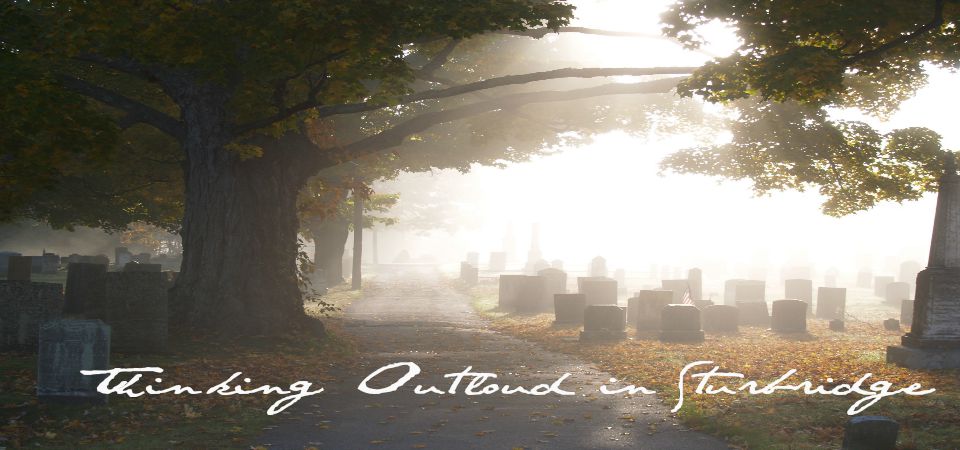Obviously, the forest was here for an eternity, then the Europeans came and cleared the land for farming, and pasture land, and to build villages, towns, and cities. After a period of time some farms were abandoned, some villages, too, and the forest crept back in, and after a very short time it took over the land again. It covered all trace of man.
 |
| Vegetation swallowing a guardrail on Route 148. |
 |
| Articulating cutter arm can cut the grass below, and the tree limbs above alongside the road. |
Here in Sturbridge the DPW does the same thing. They have a tractor with a similar device that trims back all the tall grass and low hanging tree branches and brush alongside the roads. Earlier in the season they came by on Route 148, but as you can see in the photographs, the vegetation takes over very quickly.
Maintenance of the roadsides, sidewalks, and the rest of our infrastructure is forever, and if we slack off it will cost us dearly in dollars and our safety. That's something to consider when making a decision about material to be used on any project. We may want visual impact, but cost, and maintenance must be the deciding factors.
 |
| Half of the bridge on Haynes Street has been demolished, and is waiting to be rebuilt. |
I guess we need to keep in mind not only how a project will look, and function, at the present moment, but think down the road a bit about how to keep it looking like day one by properly maintaining it. Otherwise, Nature will continue to take back the land, and destroy our infrastructure. We need to cut our losses in the beginning and make wise, safe, and cost effective choices.
Hmmm. Brick, stamped concrete, or plain concrete. Which has the most going for it in the long run?
Information, and cost for the Haynes Street bridge rehabilitation.


"Hmmm. Brick, stamped concrete, or plain concrete. Which has the most going for it in the long run?"
ReplyDeleteIt's brick in concrete, not brick in stonedust. If the concrete cracks and a weed grows, doesn't matter if there's a brick in it or not. I'm not an expert, but the newspapers have reported that experts report the maintenance is about the same.
And since you bring up maintenance, what happens when those new stone walls, which are stuck together with concrete, start to fail? Maintenance. Doesn't matter how we improve, everything needs maintenance. Even a dirt road needs maintenance.
Maybe we should have a town meeting to see about changing the name of the town to Drabbridge or Tightwadbridge.
Brick sidewalks require more maintenance than stone walls.
ReplyDeleteLet's see.... which should Sturbridge's DPW take care of first? brick sidewalks or our already existing roads? Concrete sidewalks will be maintained by the state, freeing up our DPW to take care of things in an already overstretched schedule.
ReplyDelete